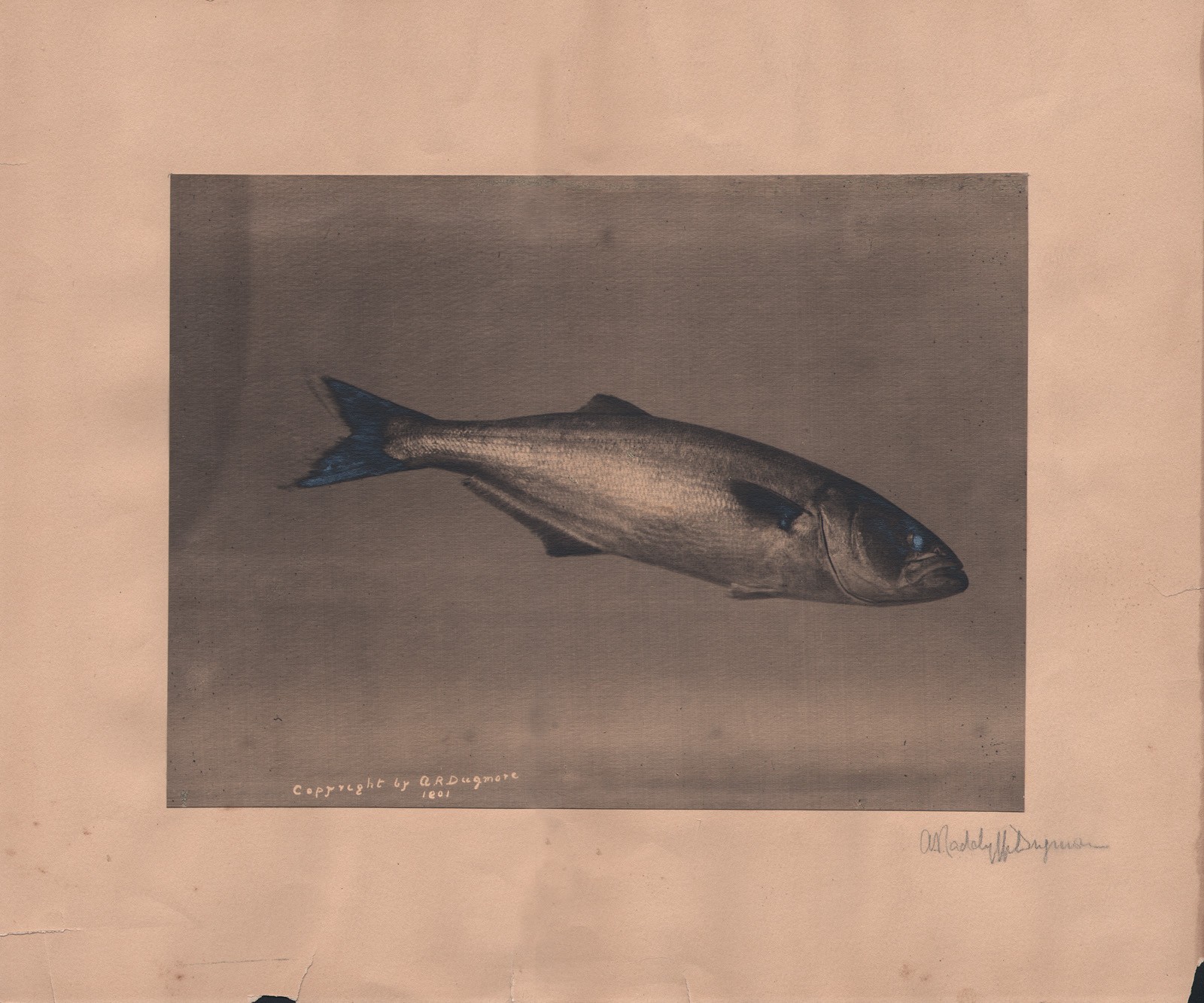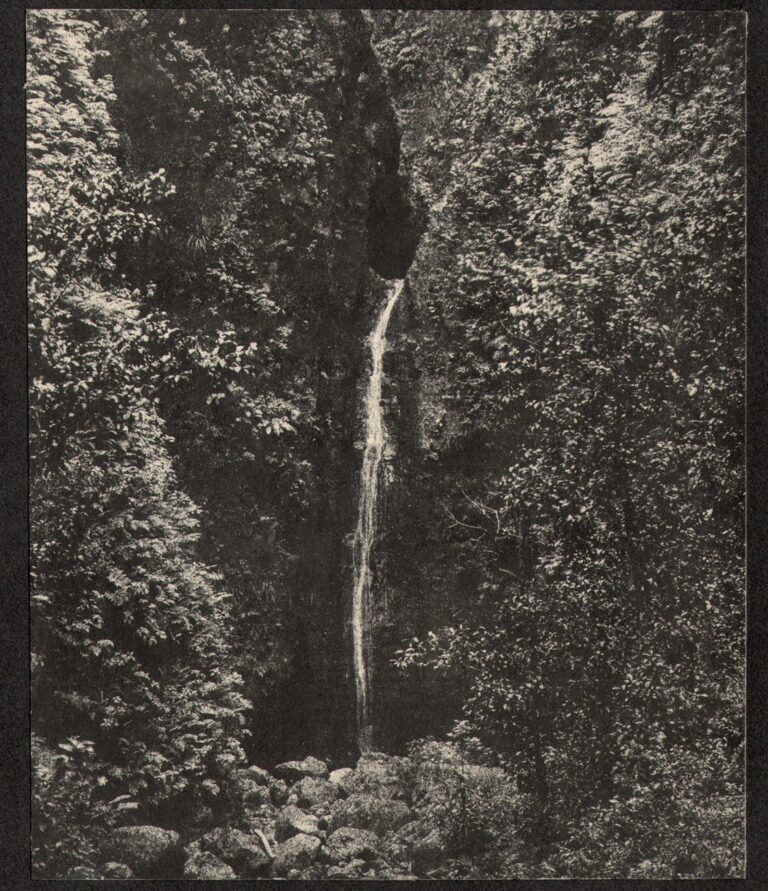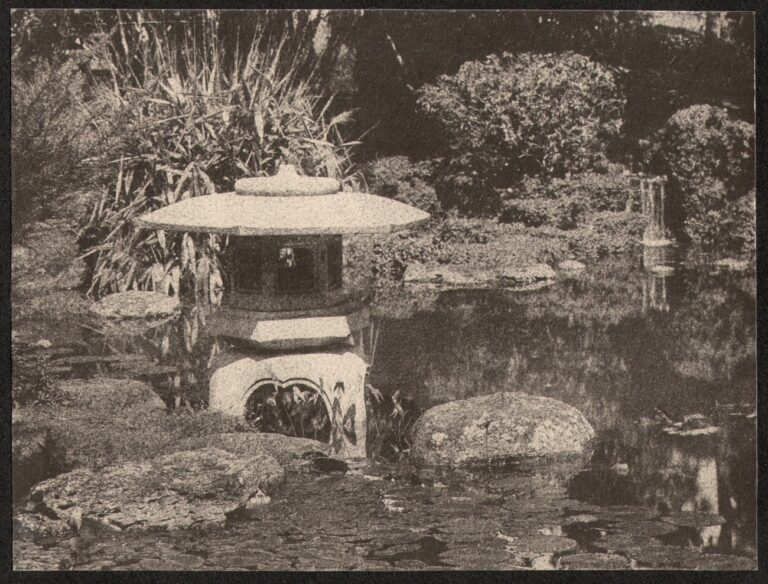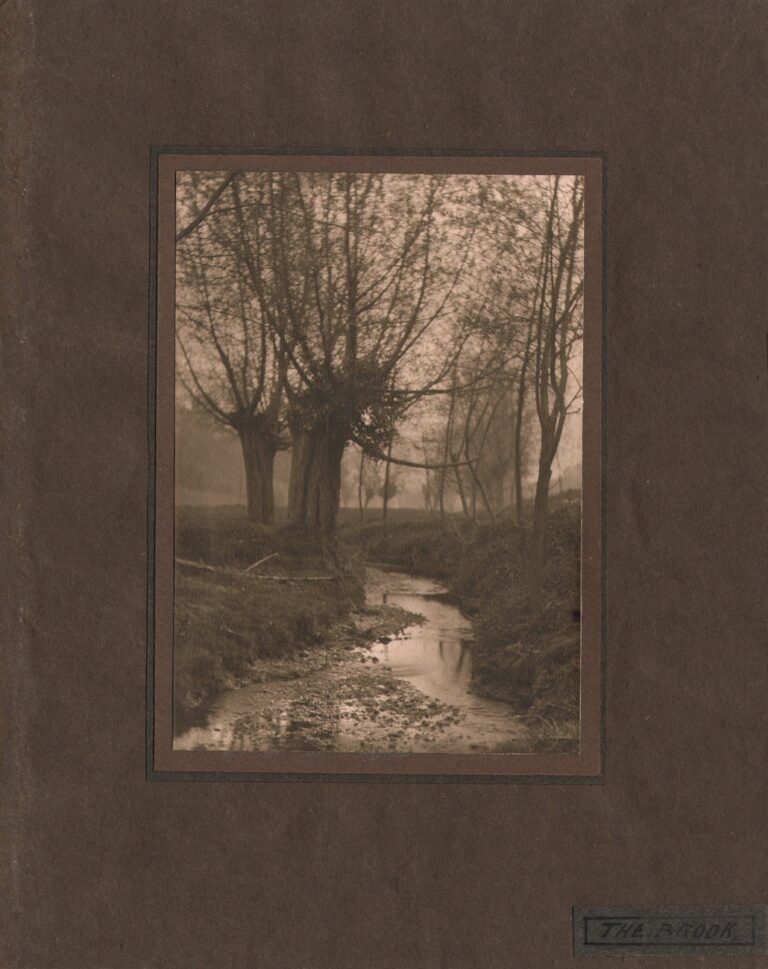
Bluefish, from Life (Pomatomus saltatrix)
With understated yet subtle effect, the eyeball and tail areas of this photographic print of a bluefish has been highlighted with hand-applied, blue-tinted pigment or Gouache, and is a rare, signed example of large-format work by the artist. Born in Wales, Arthur Radclyffe Dugmore (1870–1955) was a pioneering American naturalist and wildlife photographer, painter, print-maker and author.
Along with at least seven other fish species studies, this bluefish was most likely photographed in 1901 or before as evidenced by the copyright date printed on the work. These were exhibited by Dugmore in 1903 as part of the Scientific, Technical and Photo-Mechanical Exhibits Section in the Forty-eighth Annual Exhibition of the Royal Photographic Society of Great Britain. The catalogue states:
These fish (423-430) were photographed from life at Key West, Florida. Owing to the bright colours, isochromatic plates were used in every case. The fish were placed in a special aquarium, and the vegetable growth suitable to the environment of the fish was used as back ground.
While this example was listed in the exhibition as: 425. Bluefish (Pomatomus Saltatrix), another more commonly known example from the series appeared with the title of “Fish” in the Alfred Stieglitz journal Camera Work. In 1907, in Camera Work XVII, he published a photogravure of two white grunts (Haemulon plumierii) from this series: (429. White Grunt (Haemulon plumierii).
In 1904, a further description of this photograph appeared in the volume “An Outline of the Theory of Organic Evolution”:
The accompanying photograph of a bluefish, taken while the fish was swimming in an aquarium with the light coming from above, shows the really brilliant white sides and belly apparently as dark as the steel-blue back, because of their being in shadow (Plate 48, A}. The color of most fish resembles that of their environment. (1.)
Reproduced: “Bluefish: Being a surface fish no accessories are necessary”. Full-page halftone plate in “Nature and the Camera: How to Photograph Live Birds and Their Nests; Animals, Wild and Tame; Reptiles; Insects; Fish and Other Aquatic Forms; Flowers, Trees, and Fungi. New York: Doubleday, Page & Co. 1902, (between pp. 110-111)
Print notes, Recto: Signed within lower left margin of print from original negative: Copyright by A.R. Dugmore 1901; signed in graphite on primary mount by the artist at lower right of mounted photograph: A. Radclyffe Dugmore; because the exact type of photographic paper used to make this print is unknown to us, other than its’ magnified surface exhibits a “window screen” pattern, more specific dating is lacking at this time, although it would be safe to state before ca. 1920.
1. See: Maynard M. Metcalf, PH.D.: An Outline of the Theory of Organic Evolution: With a Description of Some of the Phenomena Which it Explains. New York: The Macmillan Company: 1904, p. 118



